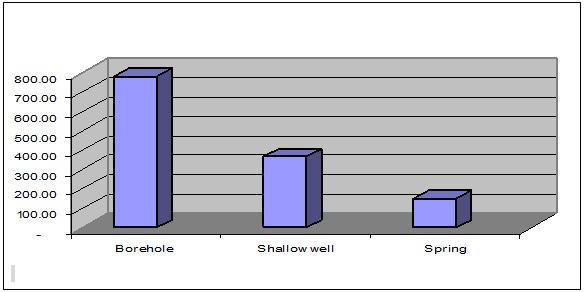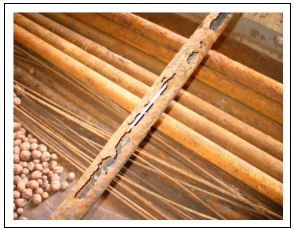Achievements
A CHALLENGE AT HAND IN GROUNDWATER SUPPLY IN RAKAI DISTRICT, UGANDA
Introduction
This paper presents experiences/professional challenges in rural water supply with specific to groundwater supply, raising the level of awareness regarding the rural water supply status in some parts of Rakai district with hope that on realizing the “challenge at hand” solutions to the prevailing setbacks may be sought and handled appropriately during the course study.
This study presents part of the work that was carried out by the consultant (Carl Bro International a/s), on behalf of Directorate of Water Development, Ministry of Water Lands and Environment under Technical Support Unit 7 (TSU 7) covering the districts of Masaka, Rakai, Kalangala, and Sembabule. The Ministry of Water Lands and Environment intends to make the districts to manage their own water sources and as such TSUs were established in order to assist districts in the planning of service delivery with respect to water and sanitation. The one of the main objective of this consultancy was to formulate guidelines for the district staff in terms of water source and technology allocation criteria
Findings
Current Situation:The study was able to identify two major issues of concern that included low district safe water coverage and low functionality rates of the most abundant groundwater water source technologies.
Most of the population (95.5 %) in this district live in the rural areas with a population of 449,293. the safe water supply in these rural areas is mainly from groundwater sources such as deep and shallow wells and protected springs. The number of sources and their status is shown in the table below. The Strategic Investment Plan 2015 (SIP 15) guidelines were used in computing the district coverage (considering 300 people per borehole, deep or shallow, 200 people per protected spring in maximum walking distance of 1.5km. The district safe water coverage was found to be less than 30%, as compared to the national average of 65%.

Functionality
Another finding that was of more interest is the functional/non-functional ratio of water sources in the district. Sources were categorised as either
Functional, Functional but abandoned, Non-functional (though not functional but are in repairable state), abandoned (Beyond repair).
An in-depth analysis of the data revealed a non-functionality rate of 41.6% for the hand-pumps which is much higher than the Government target of 10% by the year 2015. In addition, deep wells showed a higher non-functionality although most of the deep wells are over 10 years in existence.

Discussions
Probable reasons for the low Coverage.
The analyses above predict the low coverage (high ratio of functional to non-functional sources) to be a result of poor water quality and poor O&M practices, with water quality (due to mineralization and high iron content) being the most prevalent. All water source technologies visited (deep, shallow wells and protected springs) showed increasing EC levels (a measure of total ionic strengths) with increase in depths to aquifer
The EC values indicated above are less than the maximum guideline values for drinking water standard in the country an indication that the EC alone may not be solely responsible for the water chemistry. Along with high EC levels, about 42% of the samples showed levels of iron above the national guidelines and some samples (about 35%) showed pH values out of range. With varying groundwater chemistry numerous problems have resulted with the most frequently occurring being corrosion of the hand pump parts (especially the pipes and tank) which in some cases may account for the high iron levels recorded in the water samples taken
Diverse effects of the ‘aggressive water’ resulting in corrosion of the hand pump parts.

Variation of EC (uS/cm) with groundwater technologies

Conclusion
Task at hand
Nationally groundwater has been preferred as a source for rural water supply due to the low investment costs and O&M costs involved in developing and maintaining the technology (more so if it’s a point source) however this part of the country seems to be disadvantaged not because of the scarcity of the groundwater resources but the chemistry of the water. The rapid study focused on the quality of water in all groundwater technology options being explored and it was clear that (in some areas) irrespective of the technology option developed the water samples showed quality which either was close to the guideline limits (and would require monitoring) or “out of range” .
However regardless of the fact that most sources in the area have poor water quality, some sources were encountered (within the region) that had good water quality and was acceptable to the community and this acted as an “eye-opener” leading to the following conclusion .
The groundwater chemistry in the area is greatly influenced by certain parameters” that could be dependent on the groundwater system under consideration
The questions that arise out of this are;
Is the water chemistry dependent on the aquifer depth, geology/nature of the aquifer, age of the water catchment type all of which are the major factors that define the boundaries of a groundwater system?
There is a high likelihood that one or more of the parameters above greatly influence the quality of the groundwater calling for an in-depth analysis of each of the above parameters.




